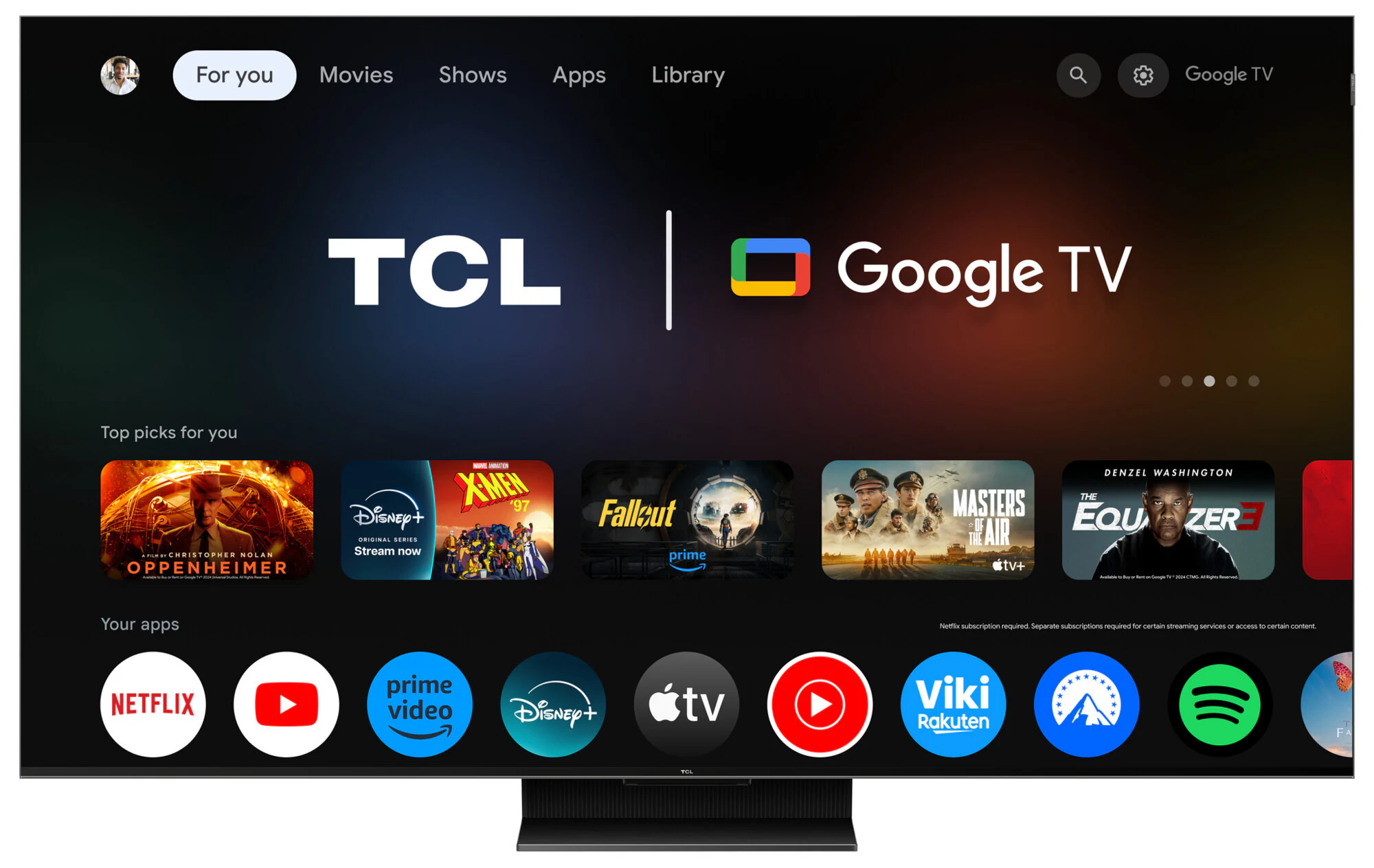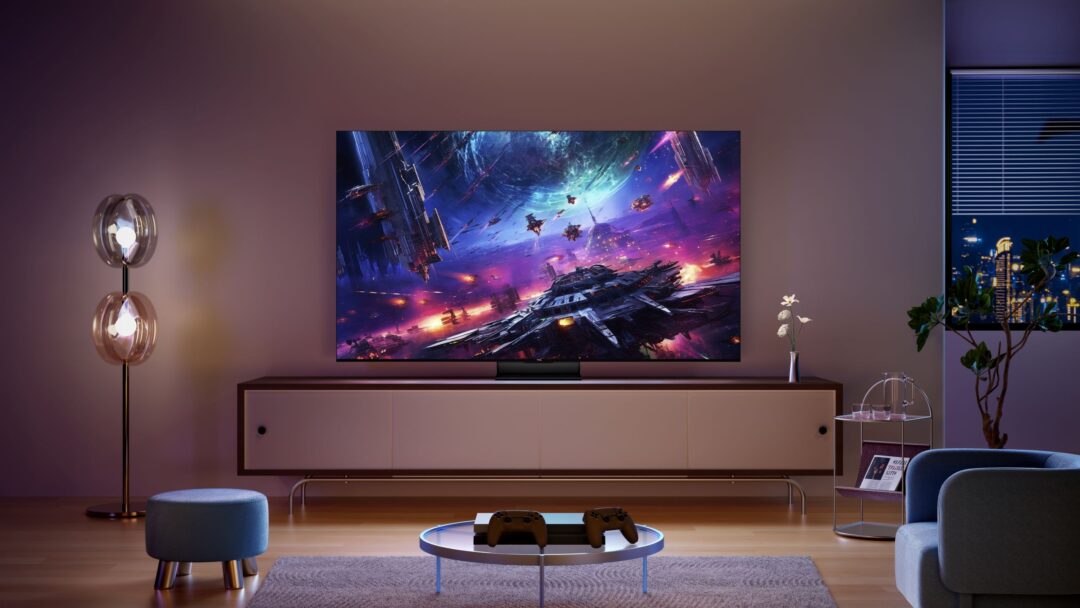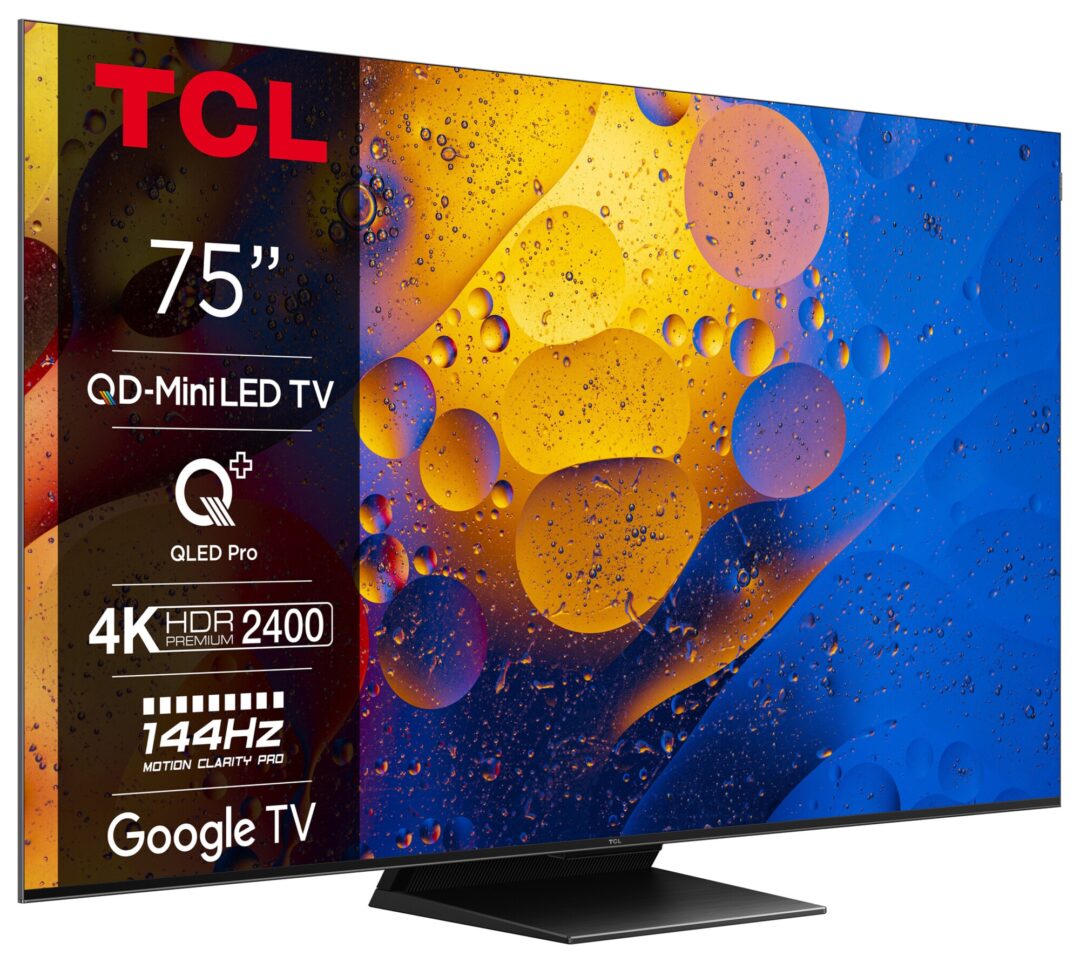TCL is a brand that quickly rises to the top of the list of candidates when discussing affordable LCD monitors. The Chinese manufacturer has quickly established a solid position in the large screen segment, thanks to good specifications and aggressive pricing.
We recently tested the budget model QLED780 with good results, but it was a basic model without local dimming: With the big brother C765 – also known as MQLED85 here in the Nordics – we take a step up the ladder, with a more advanced MiniLED backlight. This results in a clearly noticeable difference in image quality. Screen sizes range from 55 to 98 inches, and we’ve tested the medium-sized 75-inch version!
TCL C765/MQLED85
Calling a 75-inch ‘medium-sized’ may sound a little odd, but that’s because we’ve had several giant 98-inchers on test recently, and in retrospect the 75 feels like a pretty manageable and compact size! It will be a great match for medium-sized TV rooms and living rooms, with a seating distance of around three metres.
TCL now has a wide range of LCD screens on the market, all of which basically follow the same recipe: A Google TV with an LCD panel, ‘QLED’ colour filter and MiniLED backlight, the main difference being the number of individual dimming zones inside. More LEDs cost more money, but also result in a more fine-meshed and precise backlight with higher contrast. And according to TCL, an LCD TV is perfectly capable of competing with OLED, as long as it has enough zones!
With the premium model C765/MQLED85, we may be approaching the ‘golden mean’ in this respect. It’s the little brother of the more expensive C855 and X955, which we’ve previously tested with good results. And the main difference lies in the number of dimming zones.
For example, the 75MQLED85 that we’re testing here has 1248 zones, while its big brother, the 75C855, has 2160 zones under the bonnet. This isn’t something TCL hides in the specifications either.
On the design front, the MQLED85 is also very similar to the rest of the family. The 75-inch has a central foot that is easy to mount (the 98-inch model has two feet with wider spacing). The design is relatively simple and spartan, and the screen is somewhat thicker than, for example, the Samsung QN85D, so it will stick out more if you mount it on a wall.

Ease of use and features
On the smart side, the TCL MQLED85 is equipped with the Google TV user interface, which has a wide range of apps, plus support for familiar features like Google Assistant, Chromecast and AirPlay. Here you can find all the major streaming services, and the main menu can be customised to give you and your family personalised programme recommendations. The TV responds quickly to commands from the remote control.
Connectivity is good, but follows the same limitation as other models in that only two out of four HDMI inputs support 4K/120Hz. This is despite the fact that Samsung and LG have had this for a while. This is due to the chipset used, and we’ll probably have to wait until 2025 before TCL can offer models that support 4K/120Hz on all four. But at least TCL has ensured that the third HDMI connector can be used as an audio output (HDMI eARC), so you always have two free inputs for gaming purposes.
The TCL screen also excels with good format support, including HDR10+ and Dolby Vision for films, series and gaming. The TCL monitor is also well organised for gaming, with support for 144 Hz and VRR, FreeSync and G-Sync, plus a separate Game Bar with game settings.

Picture quality
When it comes to picture quality, MiniLED is the key word according to TCL. Their 2024 models are utilising a new MiniLED chip that is reportedly brighter and more energy-efficient than the previous generation, and makes it possible to insert multiple light sources and zones for a given screen area.
We can immediately see that too, because the MQLED85 screen really does have excellent brightness! Even in a brightly lit room in broad daylight, it manages to deliver a brilliantly clear picture, perfect for enjoying sports and other entertainment.
We measured the TCL MQLED85 at just over 2,000 nits in a small 10% window, and 750 nits across the entire screen. That’s almost as much as its big brother, the C855, and twice as much as a typical OLED TV! What’s more, the light distribution is even and precise, with no tendency to ‘dirty screen’ when the entire screen is white. In other words, you can look forward to the winter sports broadcasts.
The TCL screen also manages to be ‘switched off’ when it needs to be: Here, an excellent black level in the dark areas. This, in turn, leads to a fantastic contrast, and here we notice a big difference compared to the QLED780/C655, which is a less expensive model without local dimming.

Naturally, films and series in HDR format look great on the MQLED85, thanks to the intense brightness that the TCL display has in store. There’s plenty of colour in bright details such as sunlight, explosions and the like. Even fireworks in dark skies look impressive, thanks to effective localised dimming. Admittedly, we can glimpse a few outlines and halo effects here and there, which aren’t as prominent on high-end models with even more zones, such as the C855 and X955.
As a result of the generous brightness, the TCL is also able to offer a wide palette of vibrant colours. Colour reproduction is convincing in both SDR and HDR modes, although perhaps not as ‘studio-correct’ as the very best. For example, a Sony Bravia 7 has even more neutral colours in movie mode. Alternatively, it may be worth paying extra for a calibration of the TCL monitor.
Another area where we see the TCL doesn’t always keep up with the very best is in motions. During fast movements and camera pans, we can sometimes glimpse a little break-up and unevenness in the image. In addition, the local dimming sometimes seems to lag a little behind the rest of the image, blurring it a little. The Samsung QN85D, for example, is slightly sharper in this discipline.
It should also be mentioned that the MQLED85 has a fairly narrow viewing angle. So you don’t have to sit much to the side for the image to look significantly paler. This is a common problem with most LCD screens with backlighting, but it’s still worth a mention.
Sound quality
The TCL MQLED has an Onkyo-branded 2.1 sound system with under-mounted stereo speakers and an additional bass unit on the back. The sound has to be described as okay, with strong and clear voice reproduction and sufficiently rich bass to give a decent impression of music and sound effects. It’s completely standard and average TV sound. For most people, it will be beneficial to spend a few extra euros on a soundbar.
Conclusion
The TCL MQLED85 joins the ranks of successful LCD TVs from TCL. It is clearly modelled on its predecessor, the MQLED80, and delivers a performance that in many cases is close to its big brother, the C855. First and foremost, this means impressive brightness and significantly better contrast than the simpler LCD variants. However, there are some prominent competitors (e.g. Samsung QN85D, Sony Bravia 7) that offer even better connectivity and a slightly sharper picture in some cases. But they don’t fare as well on price in all screen sizes. The MQLED85 is therefore a good buy for those who want to take a step up from the budget models without breaking the bank!

We think
The TCL MQLED85 delivers a sharp and bright image with impressive contrast, especially suitable for sports, movies and other TV entertainment in HDR format. The movements could have been even smoother and the viewing angle is relatively narrow. Only two out of four HDMI inputs support 120 Hz.
2399 €
Specifications
- Size/type: 75” 4K QLED LCD
- Resolution: 3,840 x 2,160 (4K Ultra HD)
- Screen frequency: 48 – 144 Hz
- Operating system: Google TV (Android 12)
- Inputs: 4 HDMI (2 x 2.1), 1 USB 3.0
- Outputs: HDMI eARC, optical digital audio output
- HDR: Dolby Vision, HDR10+, HLG
- Screen sizes: 55“, 65”, 75“, 85”, 98”
- Other: Dolby Atmos, AIPQ video processor
- Web: TCL.com




